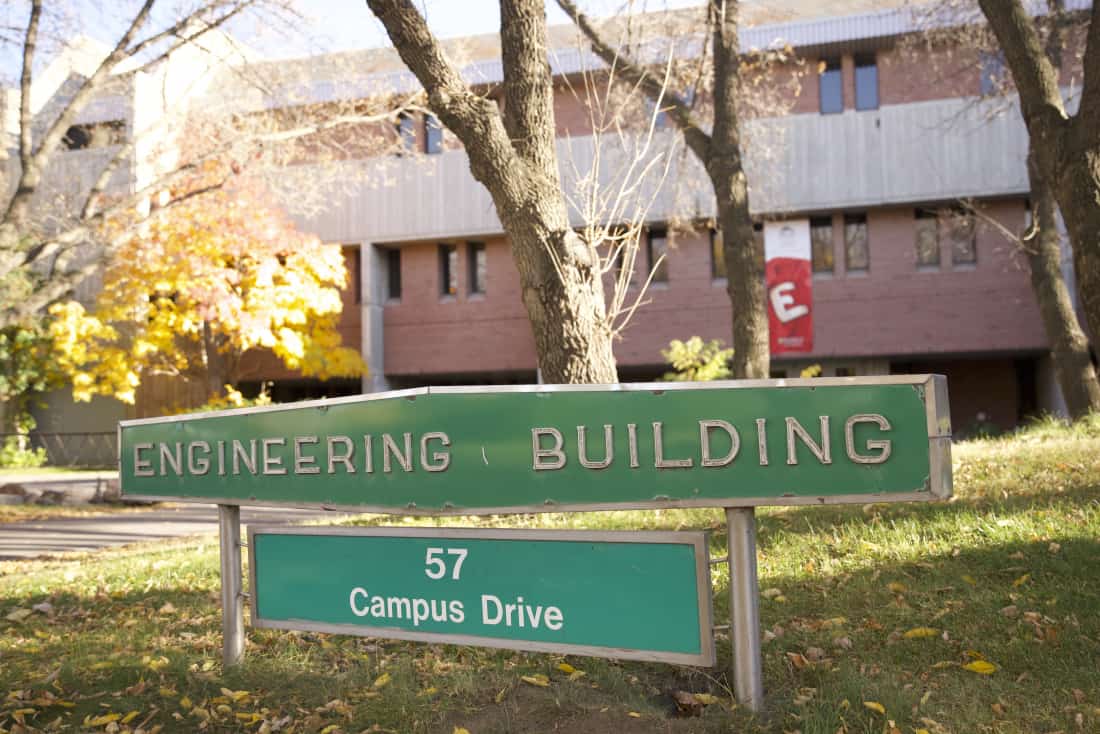
Engineering education is “not getting easier, it’s just getting different,” says Sean Maw, a professor of engineering at the University of Saskatchewan.
The changes include a more consistent weekly schedule with common lunch hours and break times for all students, and a decreased number of final exams. To replace those finals, students will be assessed regularly throughout the year with competency-based tests. The college is also making separate courses more interconnected and putting more emphasis on the relevance and sequencing of the content they cover.
The College of Engineering hopes students will have more practical skills by the end of first year.
Rethinking education
The process began in 2016 when the college had the idea to start from scratch and re-envision the entire first-year engineering experience, according to Maw, who is one of the project leaders. He believes that engineering education has been the same for too long, and that the system is now outdated.
“There’s been some enhancements and some improvements, but the basic model is pretty much the same,” Maw said. “So we wanted to see what we could do if we pretended that we had no rules.”
Aiming to re-imagine engineering education, the project’s leaders came up with the competency-based curriculum, which Maw calls “a whole new way.”
“This is a new thing for engineering that has not really been done in Canadian engineering education,” Maw said.
Some first-year courses are currently doing a pilot project to test the competency-based model. In an email to the Sheaf, Fatima Butt, a first-year engineering student taking one of these classes, says that though the material is new to her, the testing system helps her succeed as long as she is competent in the topics.
“It is personally one of my favourite classes despite also being one of my hardest,” Butt said. “It allows you to showcase you ability rather than cramming for finals and making dumb mistakes.”
Putting students first
One of the reasons for the project is the attrition rates at the college. The new curriculum will emphasize teaching what an engineering career means, to help students figure out sooner whether or not they want to continue in the program.
Maw says that they are both trying to keep students from failing out and also encouraging students to leave if engineering is not the right path for them.
“We’re trying to accelerate the process and make sure they have more confidence and more certainty that this is the program for them,” Maw said.
To address students’ concerns, the college formed a student advisory council consisting of upper-year engineering students in the early years of the project. They were consulted throughout the project, especially in the earlier years, according to Maw.
“They warned us of things that they were concerned about, and they’ve also told us what they think they’d be enthusiastic about,” Maw said. “They played a key role in the fundamental design.”
A structured schedule
The new model will add structure to an engineering student’s day, with shared lunch times and breaks. Maw hopes this will encourage students to socialize and have fun outside of class.
Butt is not on board. She believes that the structured schedules might be too similar to high school and take away from the “university experience.”
“There would be [a] lack of [the] freedom that students always enjoy in uni,” Butt said.
She says that having structured breaks will limit engineering students’ interactions with students from different colleges, which she finds crucial to building relationships.
“And knowing engineering students, if we all have a break at the same time we’ll just discuss our classes and homework which would make it feel less like a ‘break,’” Butt said.
Easing transitions
Other changes will focus on the transition of going into university. Optional and free summer top-up courses and a bank of automated tests will serve as assignment “zero” to start off on the right foot.
Maw hopes that these courses will provide all students entering first year with the same basic knowledge, and help those needing the extra help.
“In a sense, it’s sort of helping to level the playing field a bit coming in,” Maw said.
Butt was unable to take the engineering top-up courses this summer, but she did take some outside of engineering. She says that the top-up courses were helpful.
“I took the physics and math summer top-ups and they actually helped get me back in the right headspace quite well,” Butt said. “I especially enjoyed that there were engaging live tutorials that made the material review almost fun and a bit like a discussion.”
Looking ahead
The pandemic has caused some complications in the plan, but Maw says that they hope to be back to in-person teaching for Fall 2021.
“COVID-19 has made some new challenges for us in planning and development, but we are pushing ahead,” Maw said.
For now, the changes will only be for the first year of engineering, though Maw thinks that these new approaches might go further in the future.
“Assuming it works well and it’s well received, we believe it will start migrating up to the upper years, second, third, fourth,” Maw said. “The expectation is that this will seep upwards.”
—
Wardah Anwar | News Editor
Photo: Ammara Syeda | Photo Editor